Table of Contents
The Census of India is a decennial effort that offers a detailed demographic overview of the nation. It is essential for informed policymaking, resource distribution, strategic planning, and governance. The Union Home Ministry has recently declared that the forthcoming Census will occur in two phases, with March 1, 2027, designated as the reference date. This Census is particularly significant due to the postponement resulting from the COVID-19 pandemic and its potential ramifications on caste enumeration, political representation, and women’s reservation.
Historical Background of Census in India
- The origins of population enumeration in India date back to ancient times, as evidenced by references in Kautilya’s Arthashastra and Abul Fazl’s Ain-i-Akbari.
- The contemporary Census, however, commenced during British governance.
- The first synchronised Census was executed in 1881 under the supervision of W. C. Plowden and has been undertaken every decade without interruption until 2011.
- The Census has transformed from a simple demographic count to a comprehensive and systematic data collection initiative encompassing age, sex, religion, caste (for Scheduled Castes and Scheduled Tribes post-Independence), literacy, occupation, language, and housing conditions.
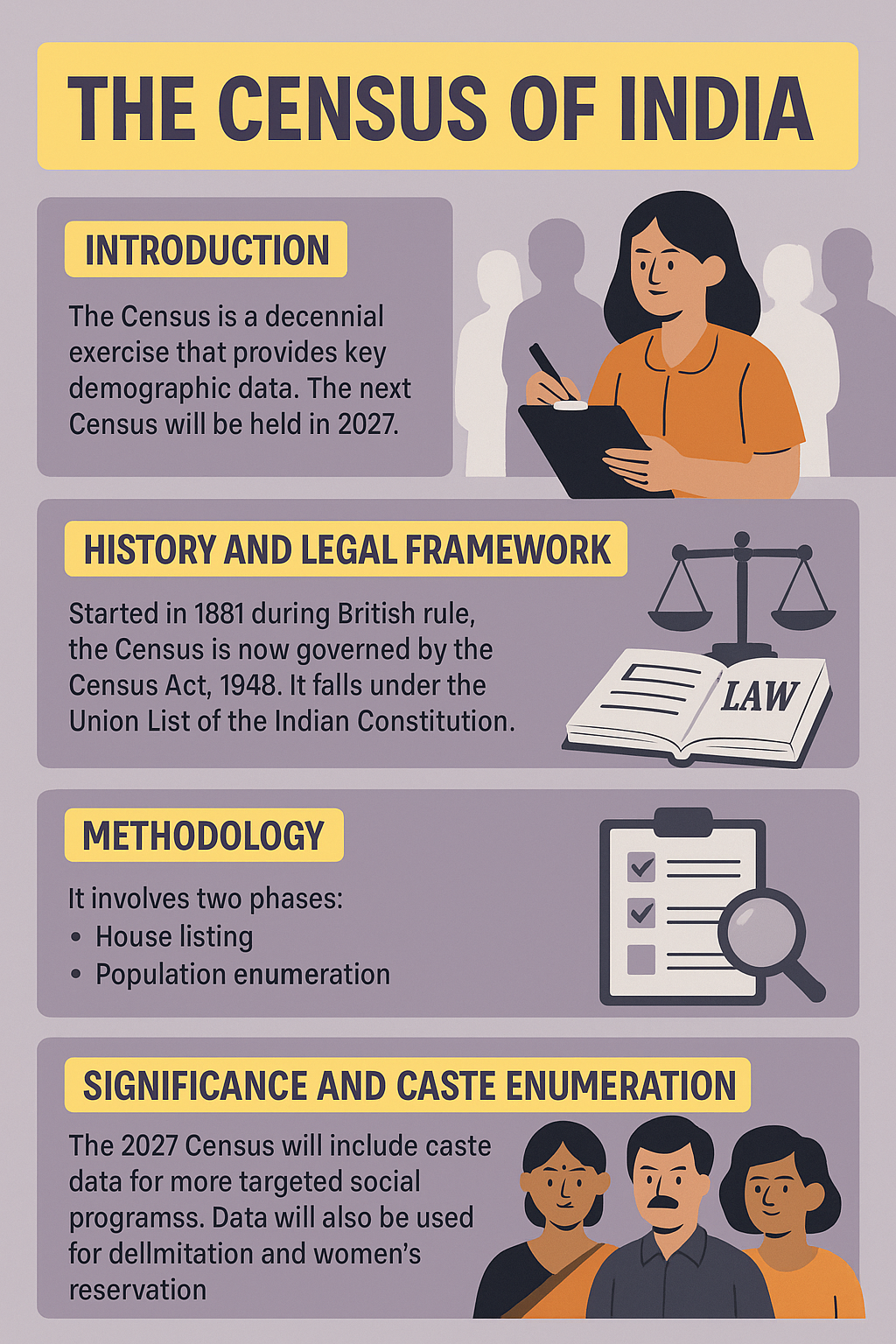
Legal and Constitutional Framework
- The Census is regulated by the Census Act of 1948, which authorises the Central Government to execute the Census and designate a Census Commissioner.
- The Census is categorised under Entry 69 of the Union List (Schedule VII) of the Indian Constitution, establishing it as a sole central responsibility.
- Article 246, in conjunction with Entry 69, confers upon Parliament the authority to legislate concerning the Census.
- Local authorities, primarily teachers, serve as field-level enumerators.
- The Act guarantees the confidentiality of personal data, imposing fines for non-compliance or dissemination of false information.
Methodology of Census Operations
- Since 1971, census operations have been conducted in two phases:
- House Listing Phase: This phase, lasting 5 to 6 months, gathers information on housing quality, kind, and amenities (e.g., water supply, sanitation, fuel, communication, and transportation assets).
- Population Enumeration Phase: Conducted near the reference date (often March 1), this phase collects personal information including name, age, gender, religion, SC/ST status, literacy, education, and occupation. In 2011, more than 300 million households were polled.
Significance of the 2027 Census
The 2027 Census is anticipated to be historically significant due to three primary factors:
- Introduction of Caste census: For the first time since 1931, a caste-wise census of all Hindus is proposed. Post-Independence censuses have exclusively gathered caste data for Scheduled Castes (SCs) and Scheduled Tribes (STs). The suggested caste enumeration responds to enduring requests from Opposition parties, social justice proponents, and civil society, aiming to collect extensive data on Other Backwards Classes (OBCs) and additional caste groups to facilitate more targeted affirmative action.
- Basis for Delimitation: Subsequent to the 2026 moratorium on seat redistribution, the 2027 Census will furnish the foundational data for the forthcoming delimitation process, which will reconfigure Lok Sabha and State Assembly seats. This may have significant federal consequences, especially for states in the South and Northeast, where population growth has been comparatively modest.
- Implementation of Women’s Reservation: The Constitution (106th Amendment) Act, 2023, stipulates a 33% reservation for women in the Lok Sabha and State Assemblies. The 2027 Census data will be utilised to implement this reserve starting with the 2029 general elections.
Census and the Indian Constitution: Linkages
- The Indian Constitution emphasises equality (Article 14) and affirmative action (Articles 15(4), 15(5), and 16(4)) for historically marginalised groups.
- Accurate demographic data is essential for the successful implementation of these regulations. The Census directly facilitates:
-
- Resource allocation pursuant to Article 275 and the finance commissions.
- Legislative Representation (Delimitation Commission pursuant to Article 82),
- Welfare planning for Scheduled Castes, Scheduled Tribes, Other Backwards Classes, minorities, women, and individuals with disabilities.
- The Supreme Court, in Indra Sawhney v. Union of India (1992), underscored the necessity of empirical data for OBC reservations, rendering a caste census a constitutional requirement for forthcoming social justice policies.
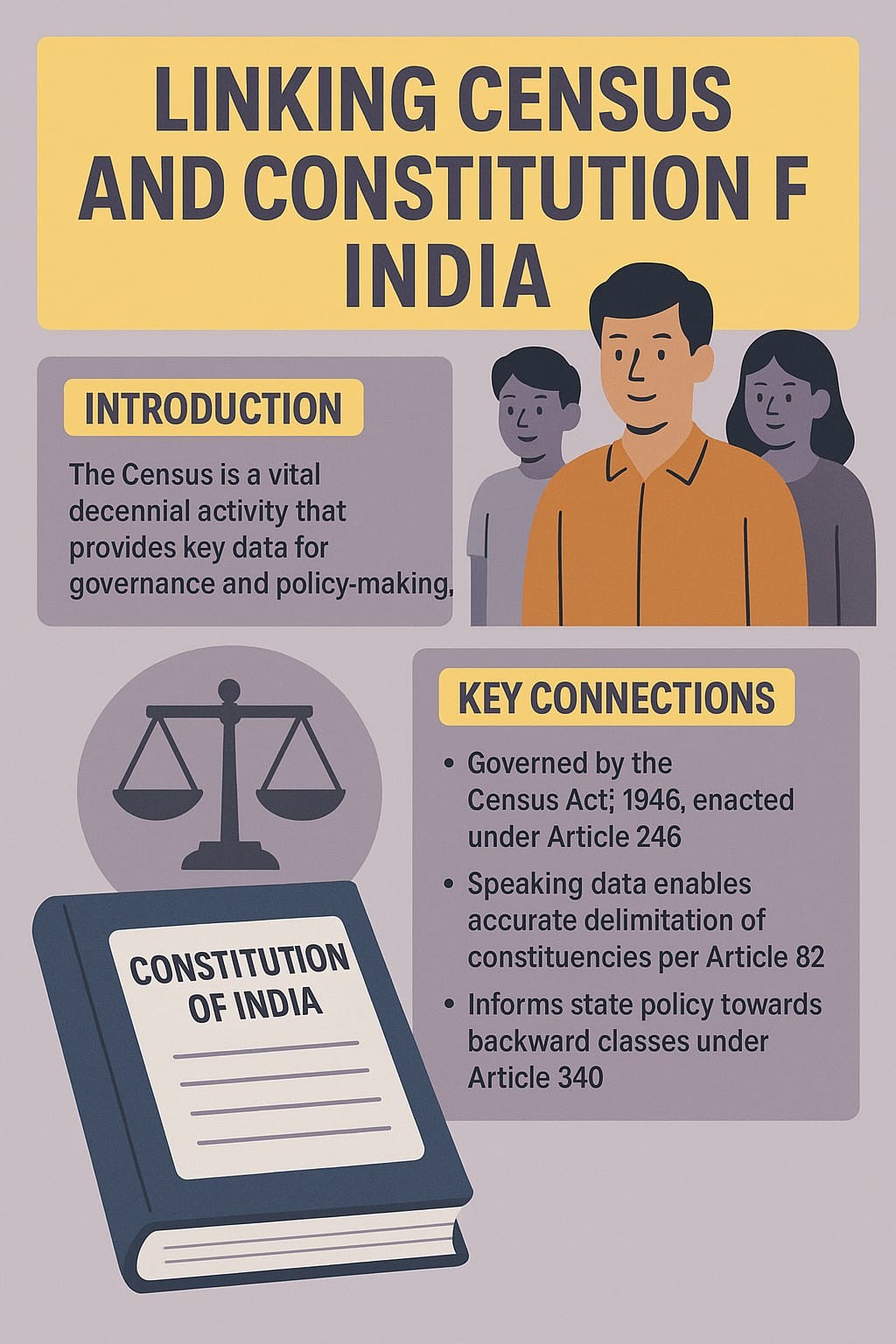
Debate Around Caste Census of India
- The Census has traditionally refrained from conducting a thorough caste census since 1931; nonetheless, proponents of a caste census present the following arguments:
-
- Empirical Basis for Reservation Policies;
- Mapping socio-economic disadvantage among caste groupings;
- Guaranteeing an equitable distribution of welfare benefits;
- Enabling governance grounded in empirical data.
- The 2011 Socio-Economic and Caste Census (SECC) attempted to gather caste data but was never formally released due to concerns regarding data accuracy. The 2027 Census intends to rectify this deficiency.
Federal Concerns and Challenges
- Southern and northeastern states have expressed apprehensions regarding a potential loss of political influence if Lok Sabha seats are redistributed according to the 2027 demographic statistics.
- States such as Tamil Nadu, Kerala, and Assam contend that population control initiatives should not incur penalties. A political consensus is essential for maintaining federal harmony.
Crucial Factors Influencing A Digital And Caste Census:
- National political economy: Both opposition and ruling parties acknowledge that data opacity worsens quota disputes; a transparent tally can transform the discourse from anecdotal to evidential, so strengthening constitutional morality.
- Global best practices and rights-oriented governance: The United States and the United Kingdom require residents to self-identify their race and ethnicity every ten years. The data substantiate the Voting Rights Act districting in the United States and Public Sector Equality Duty audits in the United Kingdom; India’s incorporation of caste inquiries corresponds with these comparative standards of enumerating social identities to address prejudice.
- Technological and fiscal efficiency: A traditional census usually requires two to three years from enumeration to the completion of final tables. The government anticipates that the digital workflow will reduce this duration to around 18 months, mostly due to electronic forms eliminating manual data entry and facilitating real-time confirmation. The prompt release of anonymised micro-data facilitates the expedited recalibration of indices, including consumer price inflation and GDP base years, resulting in substantial macro-fiscal benefits.
- Geospatial integration: GIS-tagged enumeration blocks align with the National Geospatial Policy (2022) and the PM-Gati Shakti master plan, enabling the superimposition of demographic layers onto infrastructure corridors and disaster-risk atlases. The “geo-spatialization of governance” aims to integrate census data into key initiatives such as Jal Jeevan and Swachh Bharat.
- Imperatives of cyber-security and data sovereignty: The government aims to address data localisation and privacy issues that have plagued previous digital identification initiatives by hosting the census cloud at the National Informatics Centre and certifying the application through CERT-In.
Way Forward
- Methodological Rigour: A scientifically structured caste enumeration must guarantee the accuracy of data and prevent duplication.
- Transparency and Data Use: Caste data must be disclosed for scholarly, administrative, and judicial purposes.
- Political Consensus: Delimitation and seat redistribution should be conducted via consultative processes to prevent regional alienation.
- Timely Implementation: The women’s reservation should be enacted in 2029, utilising reliable and timely Census data.
- The Census is not simply a statistical endeavour but a constitutional and democratic obligation.
- The forthcoming 2027 Census, characterised by its broadened mandate and postponed timeline, offers a chance to rectify historical data deficiencies, improve affirmative action, and redefine the nation’s political landscape.
- A thorough and transparent enumeration procedure, supported by political resolve and constitutional dedication, will guarantee that the Census remains the foundation of India’s governance framework.

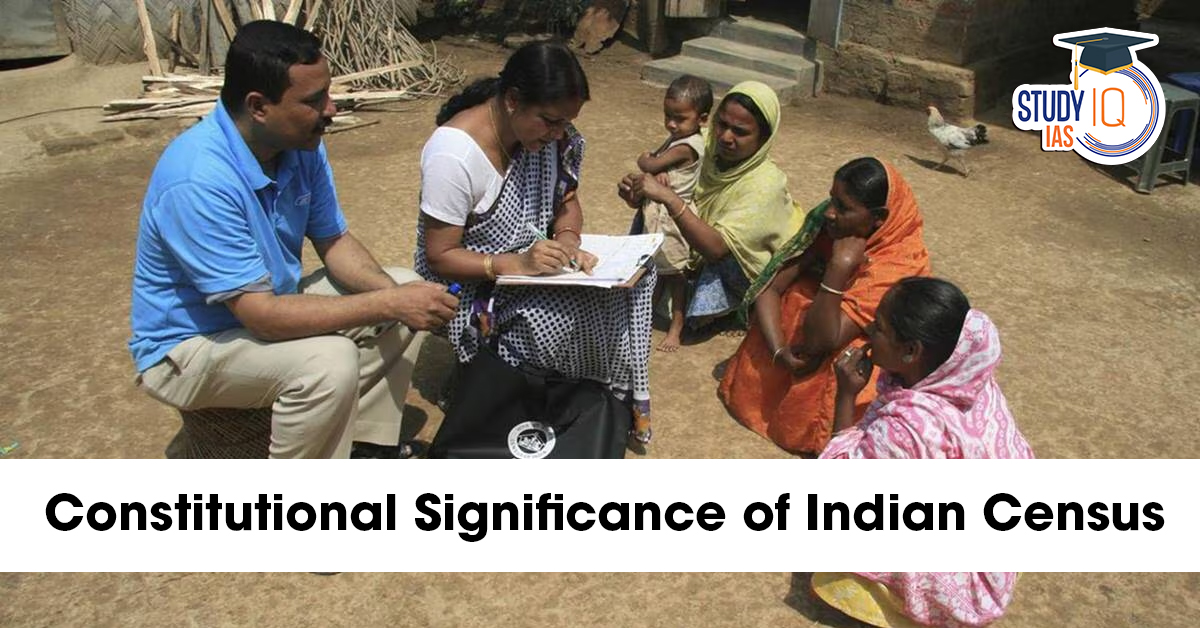
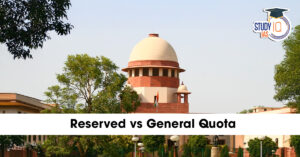 Reserved vs General Quota: Supreme Court...
Reserved vs General Quota: Supreme Court...
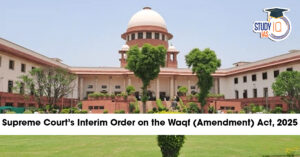 Supreme Court’s Interim Order on the W...
Supreme Court’s Interim Order on the W...

























